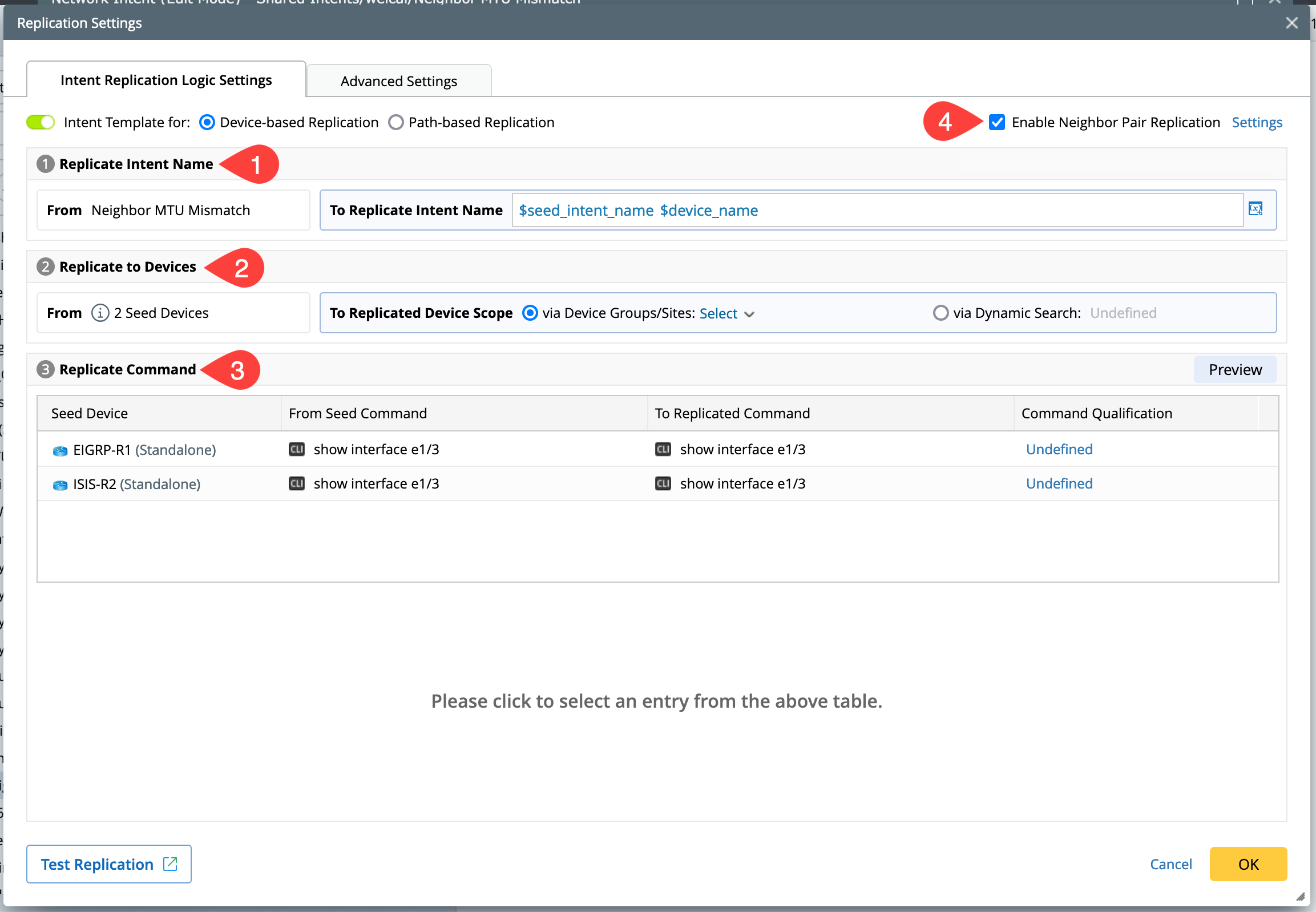Intent Replication Logic Settings
By default, the intent template will be disabled, toggle the option to enable the intent to serve as a template. Once it is enabled, all replication logics and dialogs will be enabled. The intent templates are categorised into two types based on replication logic definition: Device-based Replication (called normal NIT) and path-based Replication.
Path-based Replication differs from a normal intent template in the following aspects:
- It takes path parameters such as source/destination IP as the value of the macro variables defined in intent template.
- Path-based Replication can only replicate on live command data, ADT Dataset, and the current baseline. While normal NIT, in addition to these three types of data, can also use pre-decoded data to do the replication.
- Device qualification:
- For Path-based Replication, it is defined at command level (optional).
- For normal NIT, it is mandatory at the device level and optional at the command level.
There are key replication settings under the Intent Replication Logic Settings tab are:
Replicate Intent Name
The default naming style uses a predefined format that combines the seed intent name and device name. This format can be modified to include variables in the naming convention.

Replicate to Devices
Seed Device details such as Seed Device name, Device Type, Model, and Software Version can be viewed by hovering the mouse on From x Seed Devices.

Target devices can be defined in two methods:
- Device Groups/Sites: Choose the predefined device groups and sites. Also, you can create a new device group.

- Dynamic Search: Define the qualified devices via conditions. For more information, see Dynamic Search. Select All Devices, then define the conditions and expression.

-
You can also define the target devices using Static Method.
- Under the Static method you can Include and Exclude the devices. When you click + Include Devices, you can see the Select Device window.
- As per your preference you can select the Hostname.
-
Click ">" to add that hostname into the right pane and then click OK. You can select multiple hostname and to add them into the right pane.

-
You can also define the target devices using Static Method.
Replicate Command:
You can define the command qualification and a macro variable for each command separately in this section:
-
Define Command Qualification:
- Go to Command Qualification column, click Undefined hyperlink of a seed command to define target devices.
-
Add the devices using Dynamic Search.

-
Define Macro Variable:
-
Select a seed device entry and the section Define Command Macro Variable for will appear at the bottom.
- Define the variable pattern in Template command. Replace the string with $var_name, eg: ping 172.16.11.200 >> ping $destination.
-
More fields to define will pop up under the template command as shown in the following image:

-
Set the value for Lookup data for Target Device:
It is the value bound to the macro variable for decoding device qualification. You can set either default value or an ADT column. - Enter a prompt for input.
-
Hint about the input.

-
Select a seed device entry and the section Define Command Macro Variable for will appear at the bottom.
